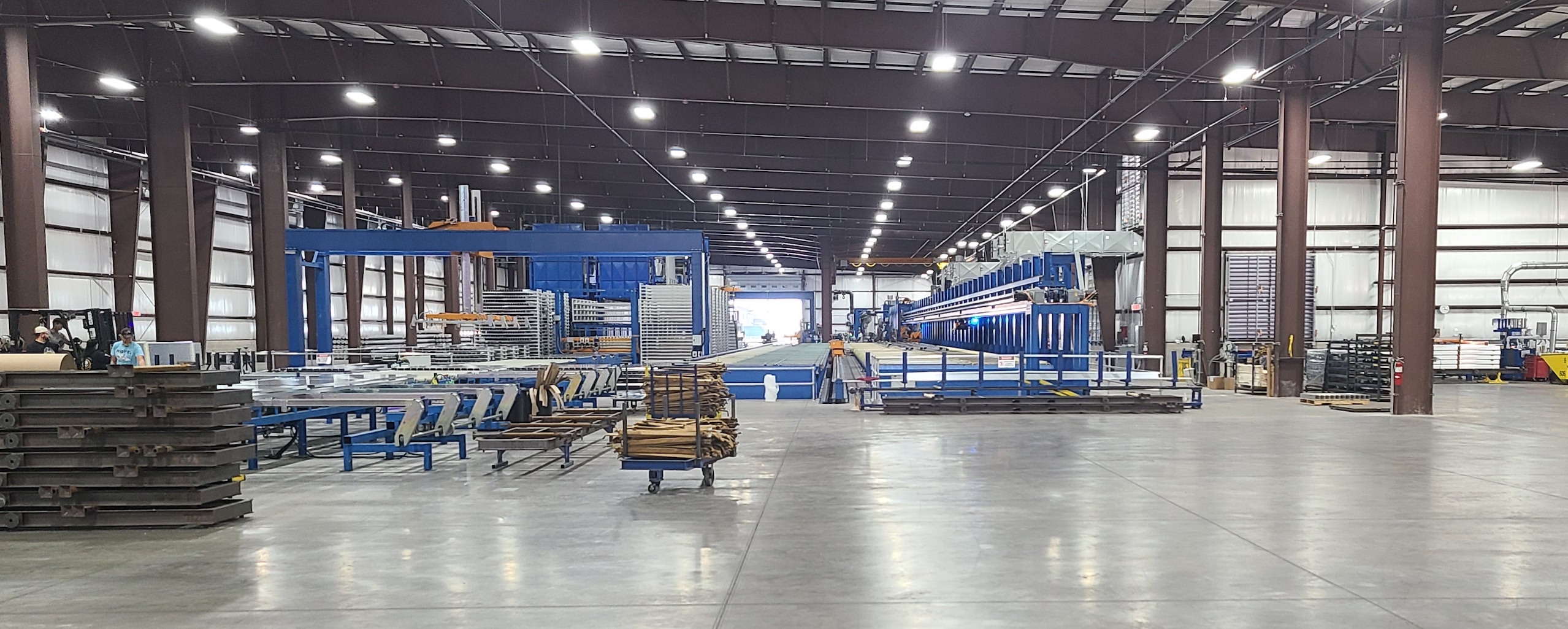
Superior Extrusion Incorporated recently completed the installation of a new aluminum extrusion press and new pack and ship areas at its location in Gwinn, MI. The expansion project includes the acquisition of 25 acres of additional property and the construction of a new 138,000 sq ft building to house the 9 inch, 3,000 ton press. The expansion enables Superior Extrusion to increase its capacity and capabilities to better serve its diverse customer base, as well as setting the company up for additional expansions as needed, thus securing its future for decades to come.
Company Background
Founded by Randy and Myron DeBolt, Superior Extrusion Inc. officially launched its operations at the site of the former K.I. Sawyer Air Force Base in Gwinn in 1998 when the company purchased and started up their first 7 inch, 1,650 ton Farrel press line. Since then, the company has continued to see a steady increase in demand and has expanded accordingly, with the installation of two additional presses over the years — a 9 inch, 2,500 ton Youngstown press in 2008 and a 7 inch, 2,000 ton Extral press in 2019 — along with fabrication capabilities. The company produces solid, hollow, and semi-hollow shapes made from primary and secondary 6000 series alloys, which are supplied to a variety of industries, such as automotive, military, food service, marine, and architecture. The company prides itself on being able to produce some of the highest quality aluminum extrusions in the U.S.
Following the 2019 expansion, Superior Extrusion experienced some market challenges when the COVID pandemic hit in 2020, but the company quickly recovered and 2021-2022 were record years for production and profitability. The company was soon at capacity again and needed to install a fourth press line to meet the demand from new and existing clients. After internal discussions, Superior Extrusion worked with their local government officials about purchasing additional property and with the Michigan Economic Development Corporation regarding grants to support the project.
The aim of the expansion project was not only to install a new press in order to meet current demand, but to set the company up for the future. This involved acquiring an additional 25 acres of property, which brought the size of the site to a total of 50 acres, and optimizing the infrastructure by moving the existing road. These infrastructure investments provide the company with the ability to install anywhere from three to five additional presses to meet changing market demand.
“We really wanted to buy into the future and looked a little farther than just one press,” said George LaBlonde III (Figure 1), president and chairman of the board for Superior Extrusion. “The founders really wanted to support the community. We provide quality jobs and, even though our location means additional transportation costs—both for log coming in and our product going out — we decided to stay here and continue to grow the company and the community.”
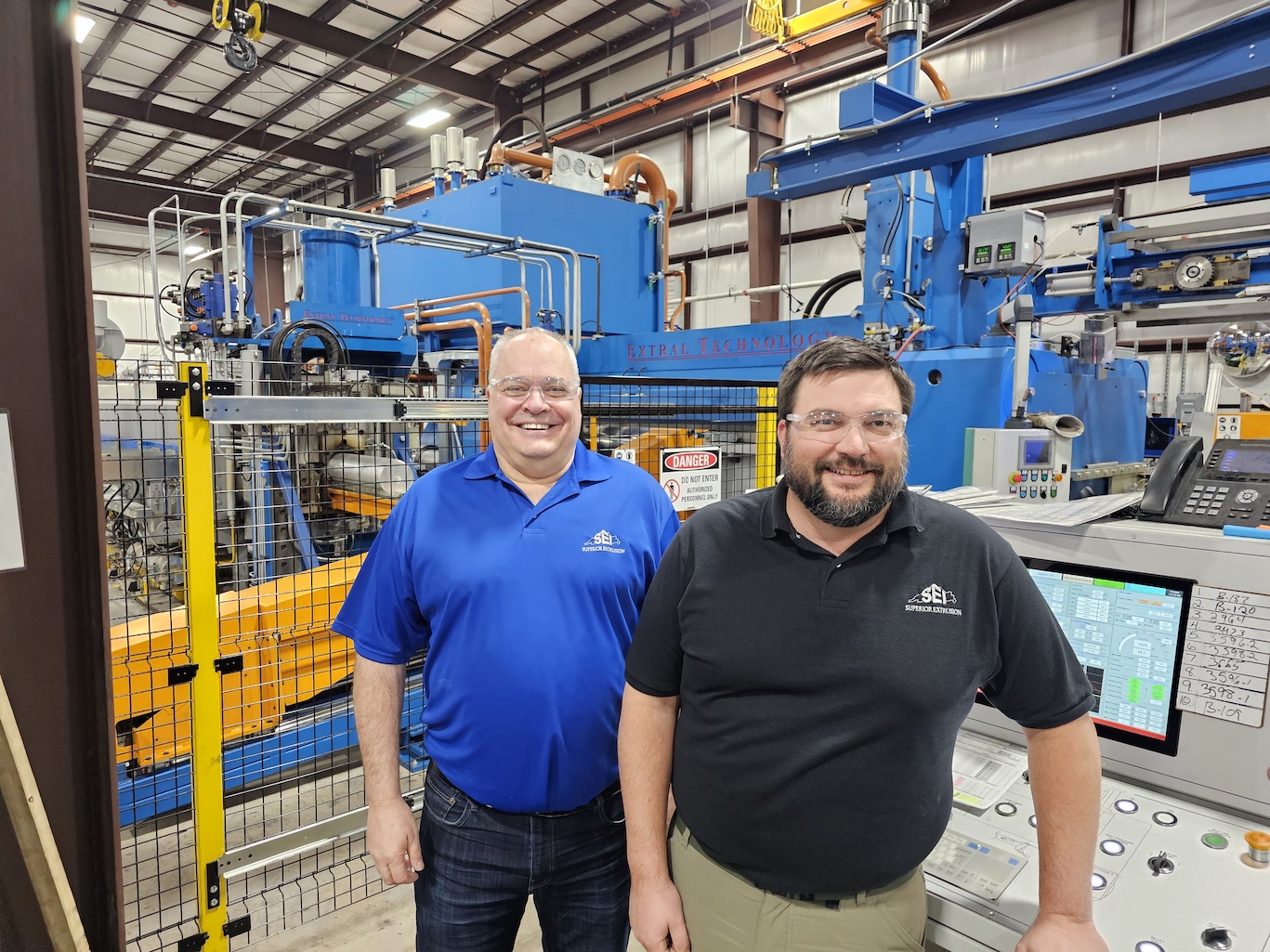
During the development process, Superior Extrusion experienced a number of obstacles—including increasing interest rates, the need for unforeseen environmental studies, and ongoing supply chain problems following COVID (particularly surrounding the supply of switch gears, transformers, and other electrical equipment for the building). Nevertheless, the company improvised as needed and successfully started up its new press line in February 2023.
New Press Line
To house the fourth press line, a new 138,000 sq ft building was constructed, with work performed by Engineering Direct/CT Cope, Cross Construction, Prime Mechanical, and Master Electric. For the engineering and design of the equipment for the extrusion line, Superior Extrusion selected Extral Technology in Italy. The press was jointly installed and commissioned by the Italian technicians and Superior Extrusion maintenance team. The fully automated extrusion line includes the new 9 inch, 3,000 ton press, as well as handling equipment for its upstream and downstream operations and an automatic aging system with dual ovens. The entire line is also connected to Extral Online, enabling the Extral service team in both Italy and the U.S. to provide remote support as needed.
“We were pleased with the press line that we purchased during our previous expansion, so it was kind of a natural choice to go with Extral the second time around,” said Matthew DeBolt, chief operating officer at Superior Extrusion. “This new press is essentially the same system as the one we installed in 2019, just larger. It is the largest line that we have in the plant, and it’s also the most efficient.”
The 9 inch, 3,000 ton press is installed at floor level, which reduced costs for civil works and installation (Figure 2), as well as providing easy access for maintenance. The container housing and the main ram crosshead are equipped with a linear guiding system in order to provide very accurate and precision positioning, while allowing for ease of adjustment. The Rexroth hydraulics system (including pumps and valves) features Allen Bradley controls and is positioned on the floor at the rear of the press, which ensures safe operation, easy access, and lower costs for maintenance. The press also includes energy saving variable speed drives, which allow for the pumps to be turned on or off as needed. “With this, we can tailor the process to what we’re making at the time and not use any more energy than we really need to make it,” said DeBolt. “This is one of the areas where we’re reducing energy usage and saving costs.”
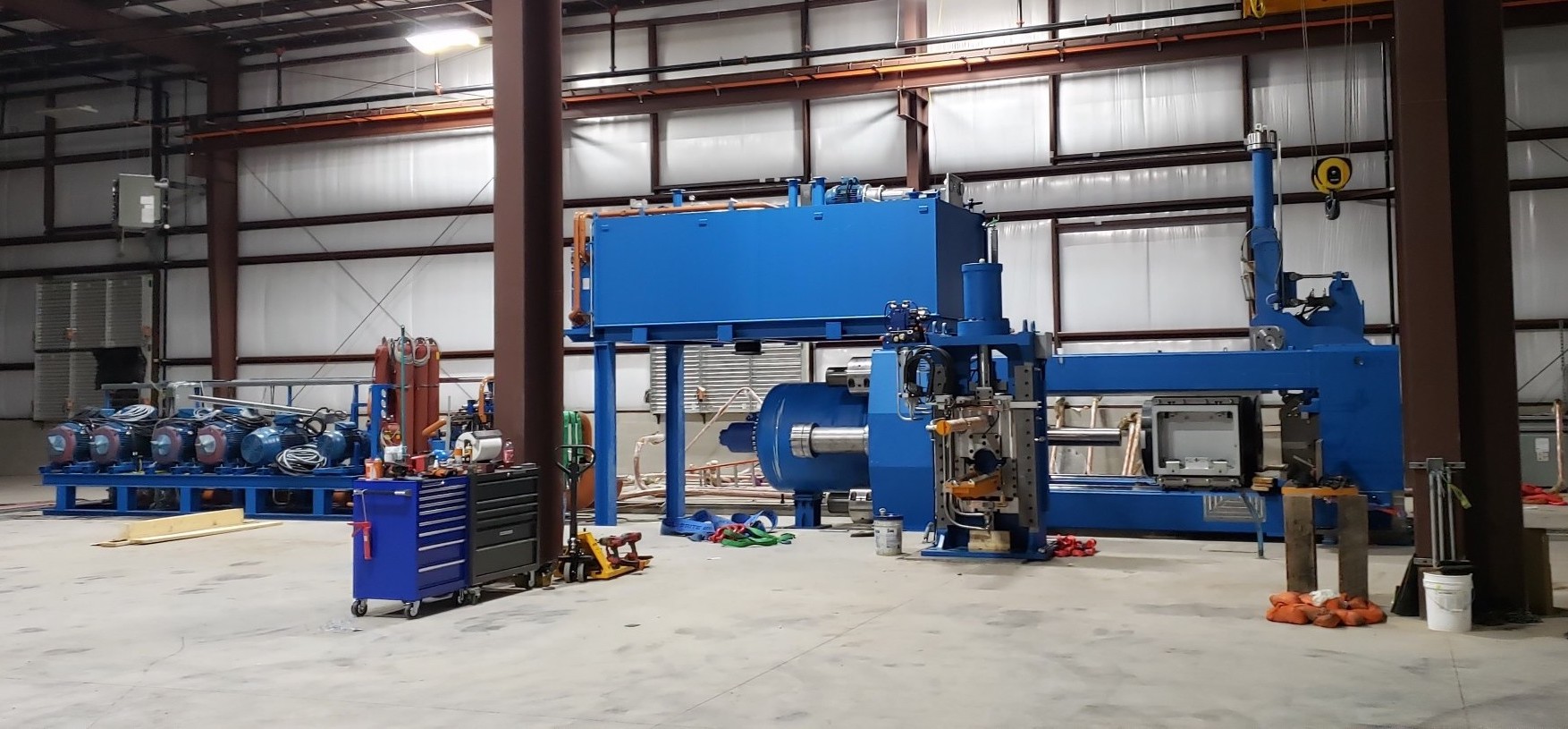
The press feeding area includes horizontal log storage, a gas billet oven with a capacity for 10,000 lbs per hour, a hot log shear, and a servo billet loader (Figure 3). Meanwhile, downstream of the press is an intensive quenching system (Figure 4) with three types of cooling—air, water spray, and standing wave for heavy products. “This is a pretty robust quench system that provides effective cooling to achieve the kinds of properties required for structural alloys,” explained DeBolt. “That was a huge part of our decision to go with this system. It also provides greater flexibility, enabling us to switch between and optimize the production of a wide variety of extrusion products. This is huge.”
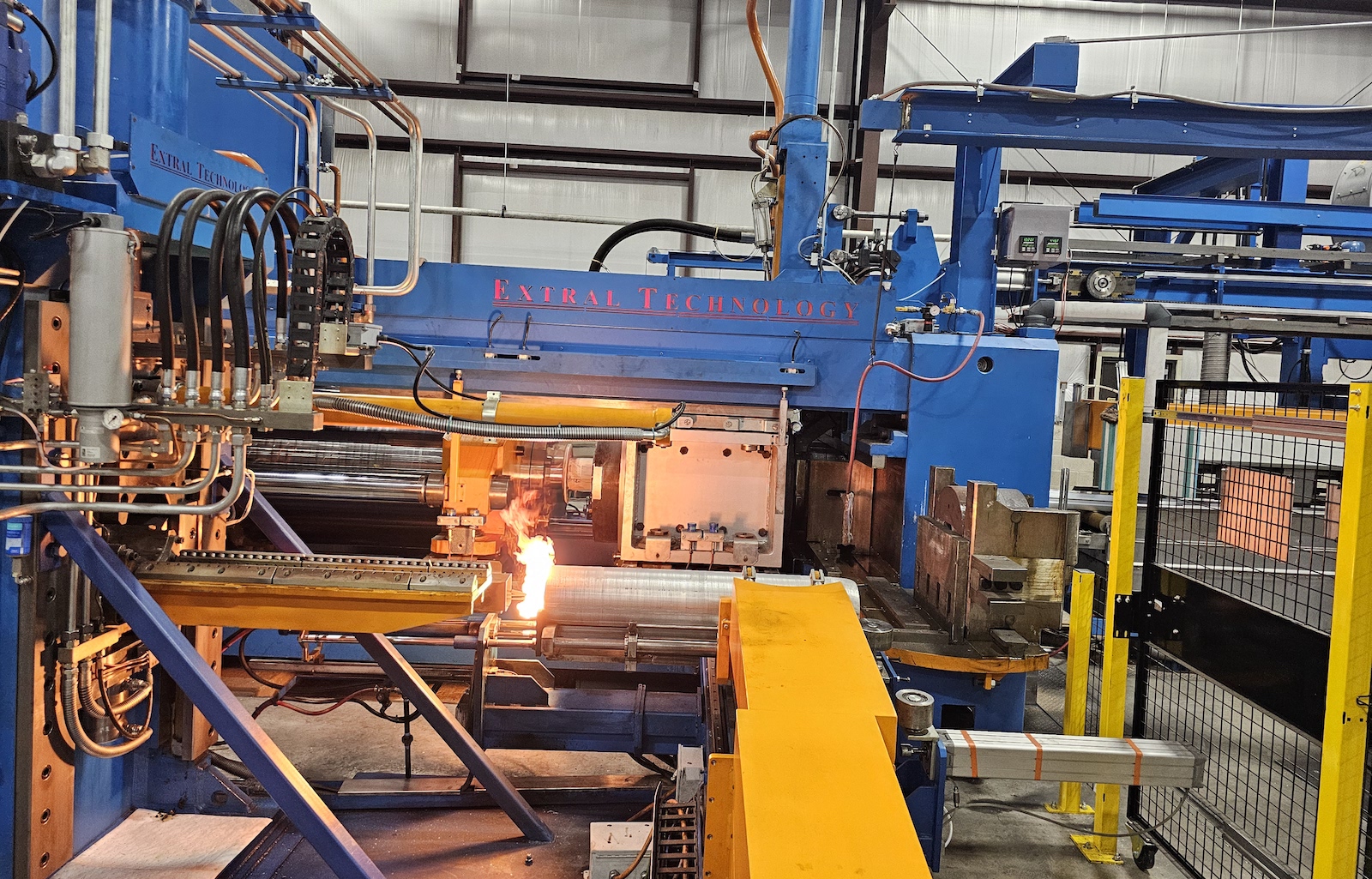
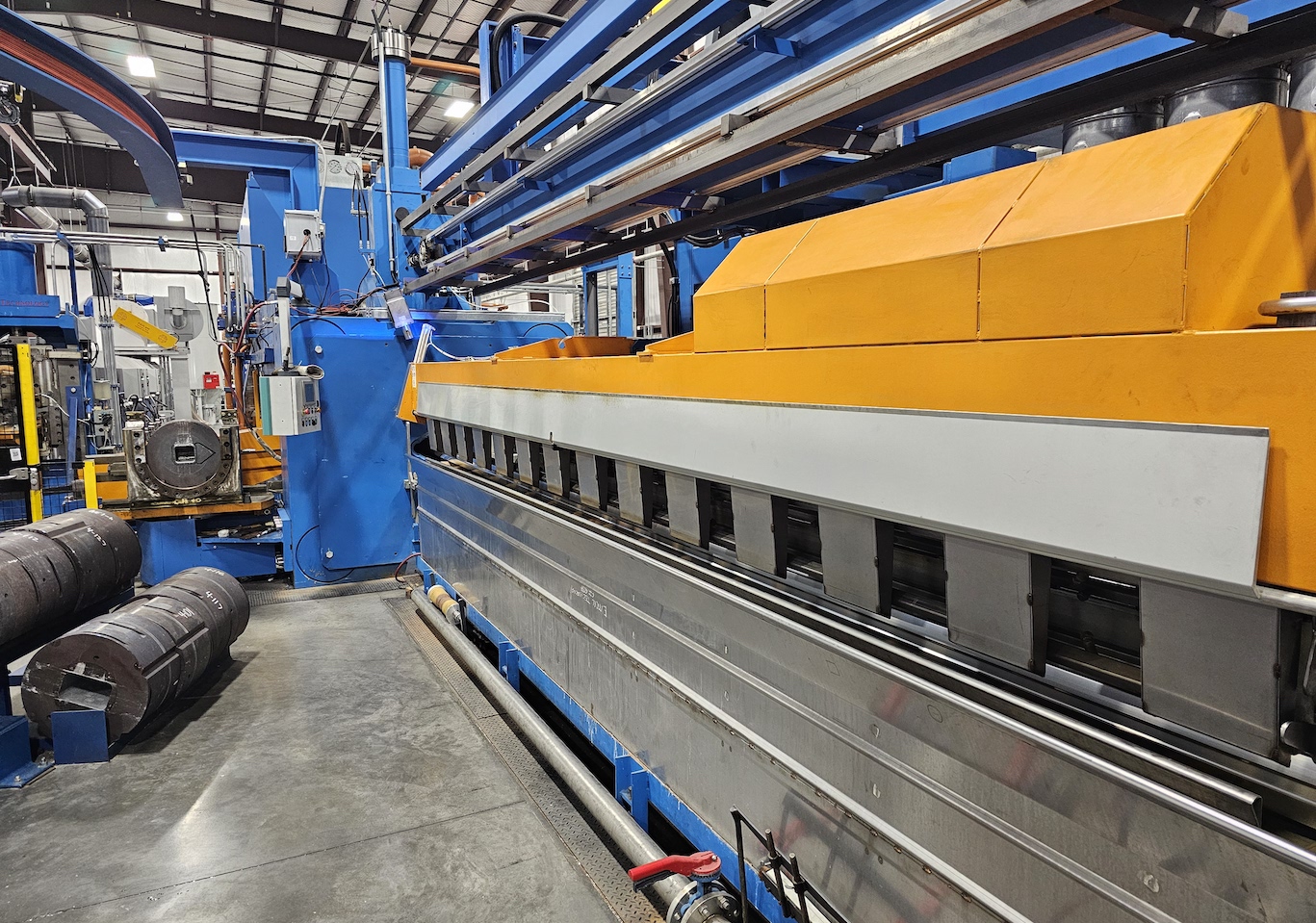
The handling system includes a 203 ft runout table equipped with a bypass double puller, a flying cut saw, Kevlar belts for profile transfer, an 80 ton stretcher, and an automated stacker/destacker. The stacker automatically loads the profiles into specially designed trays (eliminating the traditional racking systems used on other lines) that are automatically delivered to two aging ovens (Figure 5). After aging, these trays are automatically destacked and returned to the handling area—which means the trays never leave the footprint of the press line. The dual aging ovens ensure that the line is not constrained when it comes to heat treat capacity.
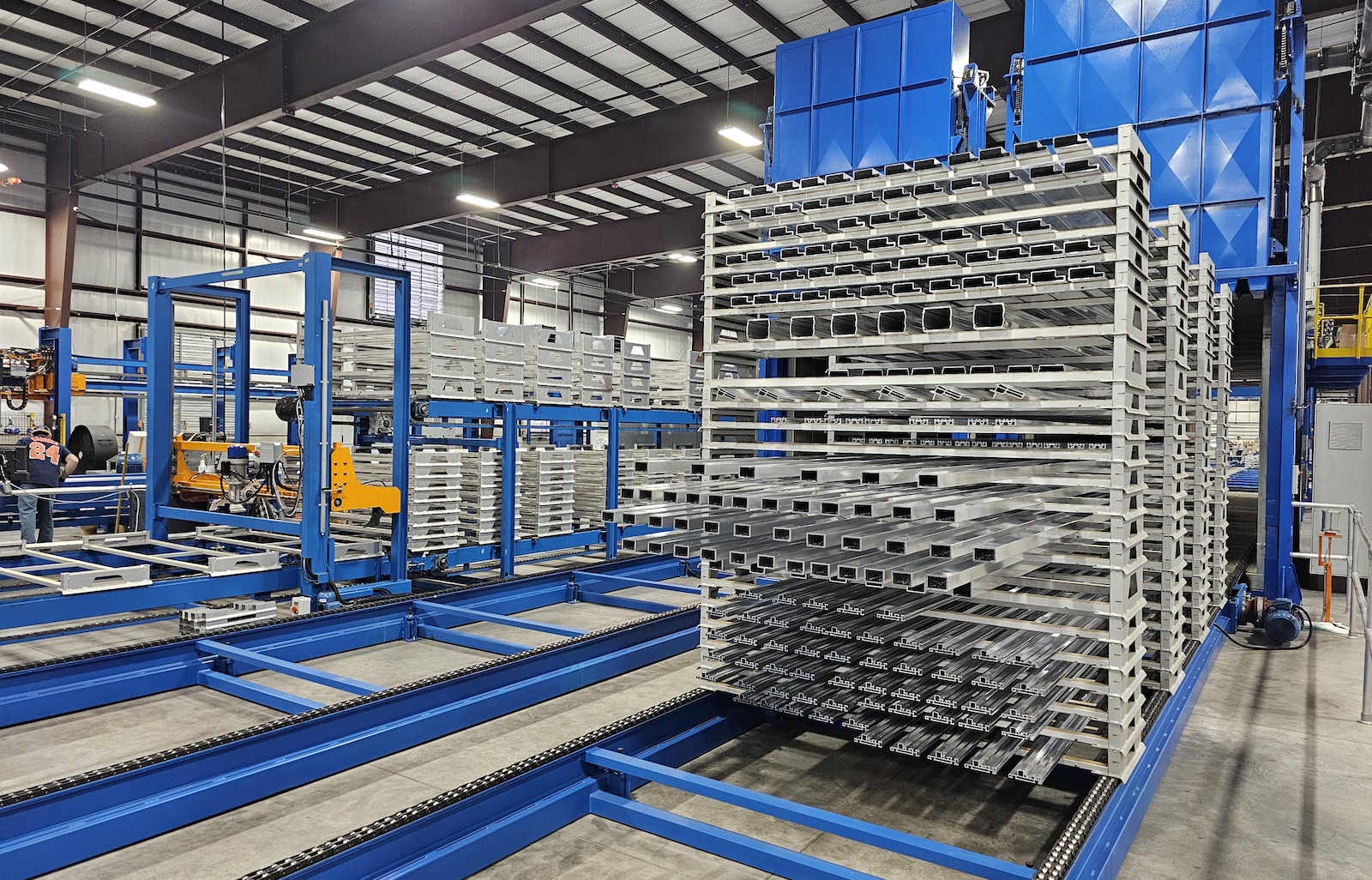
In addition to installing the new extrusion press line, Superior Extrusion expanded and upgraded two of its packing and shipping areas—including a 38,000 sq ft addition onto Plant One and about 100,000 sq ft in the new Plant Four, with two new cranes and five new truck bays. This optimizes the packing and shipping logistics for the operation.
With the completion of this project, the company gains over 20 million lbs of additional capacity per year. This will be used to supply an automotive manufacturer and used for electric vehicle production, as well as a variety of other industries.
“We went from being capacity-constrained as a company to being market-constrained, like many extruders,” said DeBolt. “When the press started up, we were poised to ramp up a lot faster than the market was ramping up, so we’re not currently operating at capacity. However, since this is our most efficient line, we’re coming up with creative ways to move production from other lines over to the new one in order to capture some of the new efficiencies that are there. We had three crews trained up on that new line within a month and a half going into operation.”
Continued Growth
The startup of the new extrusion press line and pack and ship areas improves Superior Extrusion’s capabilities in the here and now—but the company has no intention of halting its progress. Already, they are looking at additional investments as the market improves. The expanded footprint of the facility allows for the potential installation of three to five new presses, as well as additional value-added fabrication capabilities. The company is also exploring opportunities to use existing resources more efficiently (such as less energy and water consumption), as well as the possibility of investing in technologies that will optimize its operations, such as new operational software, a die management system, and the implementation of artificial intelligence.
These ongoing improvements will also directly affect the personnel. Currently, the company is in the process of implementing a new human resources and payroll system that will decrease administrative time in regards to workforce management. In addition, the company is continuing to evolve its workforce development and training programs. One of the initiatives DeBolt has been working on is a fundamental refocus on safety. “We’re starting to drive toward a zero injury culture, in which we don’t accept accidents anymore,” said DeBolt. “We want to drive the risk out of our workplace wherever we can and get that mindset in our people—to the point that not only are they expected to be safe at work, but also they take it home with them.”
Ultimately, Superior Extrusion is striving to always get better as a company and an extruder and that means looking ahead. “We’re basically moving from being a small company to a medium-to-large company,” explained LaBlonde. “That involves a lot of changes—not just with infrastructure and the expansion, but also with our staff. We’ve grown a lot in the last two years and that has required beefing up our personnel to be prepared for the future. Everything we’re looking at now is about what’s going to be in the future for our expansions and how to achieve them in an economical and timely way.”
Editor’s Note: This article first appeared in the January 2024 issue of Light Metal Age. To receive the current issue, please subscribe.
